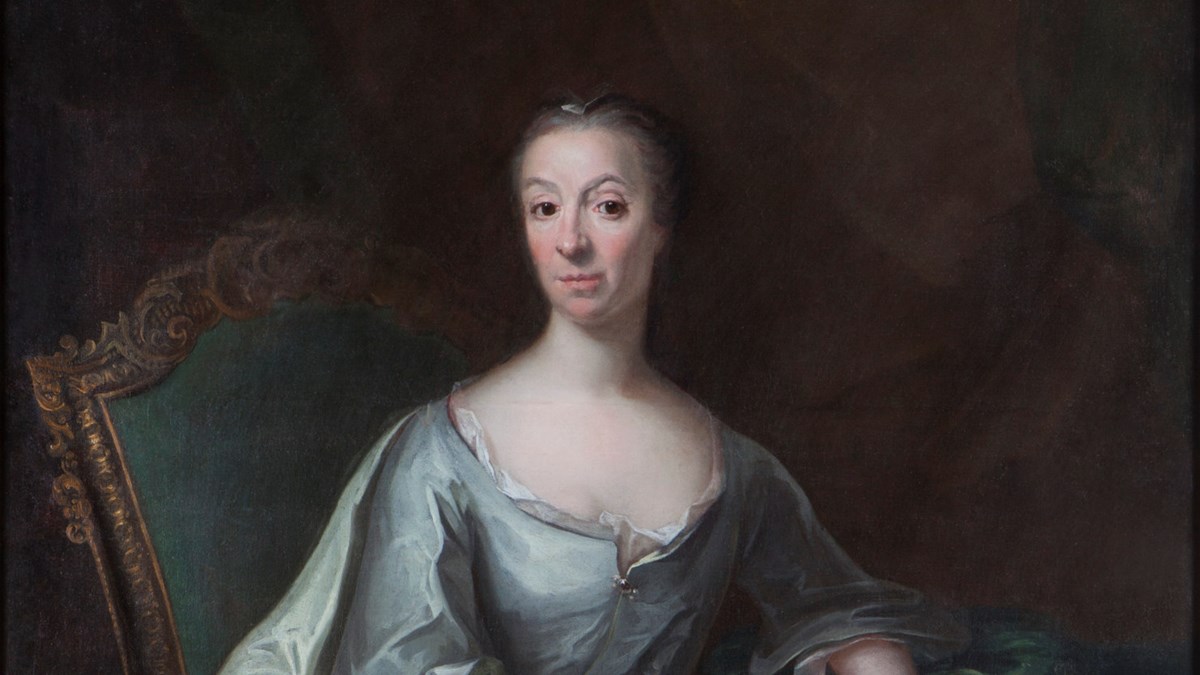Elisabeth Cronström ran Forsviks Bruk for 40 years

"... managed her wealth well and knew how to fight hard for her rights ..."
The above words were said about Elisabeth Cronström by her grandmother, Kristina Hanssen, who lived as a widow for thirty years and managed several factories in Bergslagen. In order to keep her property during the reduction period she was forced to put up a hard struggle, which reportedly needed both an enterprising spirit and good business sense. She died in 1708.
Her grandchild, Elisabeth Cronström, was then 20 years old and newly married to the considerably older factory owner, Sebastian Tham. It is likely that Elisabeth met her grandmother on several occasions. She would almost certainly have been well aware of her grandmother's enterprising work and the wealth she accumulated during the 30 years she managed her business as a widow. From what we know about Elisabeth Cronström as a businesswoman and factory owner in her later life, her grandmother must have been one of Elisabeth's role models in her commercial activities.
Factory ownership in the blood
Elisabeth Cronström was born in 1688. She grew up with factory ownership in the family, which owned a large number of mills and foundries in Bergslagen. In 1708 she married Sebastian Tham in Gothenburg; it was his third marriage. Between the years 1709 - 1724 the couple had no fewer than ten children, despite her husband’s relatively advanced age. Four of the children died in infancy. Five years after the last child was born, Sebastian Tham died. At the age of 41, Elisabeth became a widow –meaning that for the first time in her life she was granted legal capacity.
Sebastian Tham was without doubt one of the richest men in Sweden. When he died in 1729, the estate inventory had a value of 528,020 silver daler (corresponding to around SEK 97 million in 2015). This sum did not include Forsviks Bruk since a legal process was still on-going with Anton von Boij's heirs. Forsvik was estimated to have a value of 33,060 silver daler, which would correspond to just over SEK 6 million in 2015. The value of the properties would probably have been much higher today; one named the "Stone house in the city" belonging to the Tham family at Västra Hamngatan 19 in Gothenburg was valued at 10,000 silver daler, which would only be around SEK 2 million in today's money.
Elisabeth becomes the owner of Forsviks Bruk
In her inheritance Elisabeth Cronström received two manors, Öjared and Sannum, as well as the "Large house in the city" in Gothenburg. She contested one item in her husband's will, and in doing so was allowed the right to keep Dala manor for her sons. In gaining legal capacity, she had the right to manage her property – as long as she did not remarry. In that case, she would become legally incapable again and would lose all rights to manage her property.
Sebastian Tham's will gave Elisabeth's oldest stepson, Vollrath Tham, the right to Forsviks Bruk. Once the above legal process with the von Boij family was completed, Vollrath Tham could not afford to buy out the property. Elisabeth Cronström saw her opportunity and purchased his share of Forsviks Bruk. In addition to that, during the period November 1732 - January 1733 she also succeeded in purchasing all of her own children's and her stepchildren's shares in the Forsviks Bruk estates. She was at last the sole owner of Forsviks Bruk and the estates surrounding it.
Commerce councillor
Elisabeth Cronström is referred to as "Commerce councillor" in one inventory of property ownership. This was the age-old title of senior managers – normally men – within the Swedish Board of Trade, which was the Swedish authority for industry and shipping from 1651 onwards. Such a title says a lot about Elisabeth Cronström's position of power in her time.
Commerce councillor Elisabeth Cronström managed Forsviks Bruk and the surrounding properties of Forsvik and Sannum for over 40 years. During this time she expanded her holding of real estate, purchasing large and small properties in the area around Forsvik. She understood the importance of access to large areas of woodland for the factory's production of charcoal. She also showed an awareness of the need to build good housing for her subjects at the factory. The millers' quarters and the blacksmiths' quarters were both completed in the 1730s, each with four houses in a row.
They are still standing to this day, and are currently used as residential houses, a museum apartment and a café. In addition to the buildings still remaining in the factory area around Forsviks Bruk, she had a large number of buildings constructed for housing, storage and workshops which no longer exist, but which can be seen on maps drawn in her time.
Wanted to make decisions herself
Elisabeth's Cronström's own name is rarely found in official documents; she was generally represented by one of her sons or a person who managed the factory or the estates. The purposefulness that she showed in managing to acquire the full ownership of Forsvik from all its heirs suggests that she did not allow others to make decisions; in all probability, her male representatives acted in accordance with her decisions.
After a long and eventful life, Elisabeth Cronström died at Sannum manor on Boxing Day in 1771 at the age of 83. The cause of death was noted as "dropsy".
What was the character of Elisabeth Cronström? Unfortunately, we don't have a very complete answer to that question. No private correspondence has survived, nor any diaries. She is mentioned remarkably seldom in official documents. We know that her stepson, Vollrath Tham, lived beyond his assets. Legal records indicate that this caused her some financial concerns, since she lost a court case against her stepson's creditors.
Quiet but determined
The only other thing we have discovered about Elisabeth Cronström, in addition to her business strategies and deeds of ownership, is that she was occasionally noted as a godmother at christenings and that she donated a sum of money to the church in Undenäs, which was in no respect uncommon among the wealthy at that time. Was she reclusive by nature? Did she follow the Wallenberg motto, "To be, but not to be seen"? She does not seem to have had a great need for acknowledgement or prestige, but was probably more the quiet and determined type.
In our time, we tend to assign great confidence to written documents as evidence, and these are very thin on the ground when it comes to Elisabeth Cronström. But there is one more fact we know with certainty from her financial accounts: she lived mainly at Sannum until 1760. She then moved to Öjared and lived there for a period of ten years, returning to Sannum in 1770.
Possibly she knew King Frederick I and Queen Ulrika Eleonora. We know at least that they stayed over in the "Large house in the city", the Thams' house in Gothenburg, in 1722.
There are two portraits of Elisabeth Cronström: one from 1708, the year she was married, and one that is probably from 1727. Her signature has also been found on a few documents. There remains much left to research about this woman who, in the 18th century, managed Forsviks Bruk for almost 40 years.
Woman and factory owner - more common than is generally believed
Elisabeth Cronström was far from unique in being a woman factory manager. In the 17th and 18th centuries there were as many as 300 women factory owners. They are rarely mentioned in history books. In practice, wives of mill and foundry owners often had a large share of responsibility for managing the business while their husbands were alive, despite the fact that they had no legal capacity.
In addition to a great deal of domestic chores, which had not changed significantly since the Middle Ages, the wife would often take over her husband's place when he was away, working for the government or in military service. She would have much knowledge of the factory's business as well as the manufacturing processes. If the husband were to die, the work did not change – the main difference would be that the wife then had legal capacity, as well as liability, for the property. Many of these women, like Elisabeth Cronström, had a background in families who owned mills and foundries, and would acquire insights into the business from childhood on. They ran their companies very successfully, expanded their properties and modernised their businesses.
Often widows
In fact it was these women who, although invisible in the pages of history until now, significantly improved the development of industrial production in the centuries preceding the industrial golden age of the nineteenth century.
They were often the widows of much older husbands; under the law at that time, a married woman had no legal capacity. A widow, on the other hand, had the same opportunities and rights as a man to run a business as long as she remained a widow. However, if she remarried, she would lose those rights immediately. The Swedish nobility was relatively small in number and marital allegiances were intertwined. Family conditions were often complex, with children from multiple marriages, inheritance disputes, unclear ownership and so on, which led to a large number of law suits within families.






